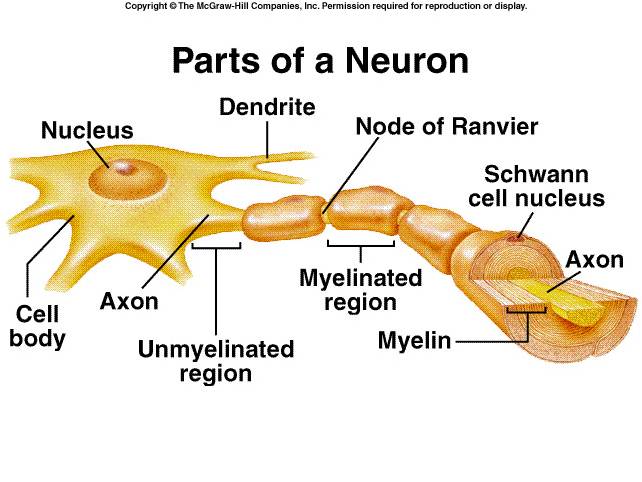
WEEK 1:Nerve
Nerve Action Potential:
Nerve signals are transmitted by action potentials,
which are rapid changes in the membrane potential
that spread rapidly along the nerve fiber membrane.
Each action potential begins with a sudden change
from the normal resting negative membrane potential
to a positive potential and then ends with an almost
equally rapid change back to the negative potential.
To conduct a nerve signal, the action potential moves
along the nerve fiber until it comes to the fiber’s
end.
The changes that occur at the membrane during the action potential:
with transfer of positive charges to the interior of
the fiber at its onset and return of positive charges to
the exterior at its end. The lower panel shows graphically
the successive changes in membrane potential
over a few 10,000ths of a second, illustrating the explosive onset of the action potential and the
almost equally rapid recovery.
The successive stages of the action potential are as
follows.
Resting Stage- This is the resting membrane potential
before the action potential begins. The membrane is
said to be “polarized” during this stage because of the
–90 millivolts negative membrane potential that is
present.
Depolarization Stage- At this time, the membrane suddenly
becomes very permeable to sodium ions, allowing
tremendous numbers of positively charged sodium
ions to diffuse to the interior of the axon. The normal
“polarized” state of –90 millivolts is immediately neutralized
by the inflowing positively charged sodium
ions, with the potential rising rapidly in the positive
direction. This is called depolarization. In large nerve
fibers, the great excess of positive sodium ions moving
to the inside causes the membrane potential to actually
“overshoot” beyond the zero level and to become
somewhat positive. In some smaller fibers, as well as in many central nervous system neurons, the potential
merely approaches the zero level and does not overshoot
to the positive state.
Repolarization Stage- Within a few 10,000ths of a second
after the membrane becomes highly permeable to
sodium ions, the sodium channels begin to close and
the potassium channels open more than normal.
Then, rapid diffusion of potassium ions to the exterior
re-establishes the normal negative resting membrane
potential. This is called repolarization of the
membrane.
To explain more fully the factors that cause both
depolarization and repolarization, we need to describe
the special characteristics of two other types of transport
channels through the nerve membrane: the
voltage-gated sodium and potassium channels.


